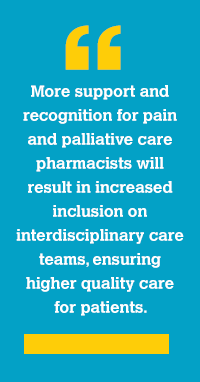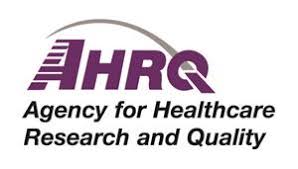CMS Responds to AACIPM’s Letter on Physician Fee Schedule
CMS Issues 2022 PFS, Delays Changes to Pain Coding
CMS has released their final rule making updates to the 2022 Physician Fee Schedule. This release comes on the heels of an open comment period in which CMS requested information from stakeholders. In response, AACIPM had issued recommendations which were one of over 1,900 public comments received by CMS related to potential separate coding for chronic pain management.
AACIPM Recommendations Quoted Directly in CMS Release
CMS delayed making changes related to pain management, promising to “carefully consider this feedback for future rulemaking.” However, the efforts of AACIPM’s many stakeholders were not for naught, as recommendations #2 and #4 from our letter were directly quoted by CMS in their summary of public comments, as they wrote:
One commenter recommended that “CMS establish a multi-stakeholder working group to determine operational details and resource allocation” and requested that CMS “establish a pilot program using innovative payment methodologies.”
See the ‘National Updates’ section below for further details.
ICYMI – Duke Releases Two More Case Studies on Person-Centered Integrated Pain Care
Both ‘exemplary’ pain programs focus on improving access to care in medically underserved communities and integrating with primary care
 The Duke-Margolis Center for Health Policy and Duke Orthopaedic Surgery released their final two case studies on exemplary integrated pain management programs. These case studies focus on the People’s Community Clinic Integrative Pain Management Program in Austin, Texas, and the University of New Mexico Pain Consultation and Treatment Center in Albuquerque, New Mexico. While each program has unique features, the case studies show that both programs share a focus on person-centered integrative pain care with a strong emphasis on integration with primary care and improving access to care in medically underserved communities.
The Duke-Margolis Center for Health Policy and Duke Orthopaedic Surgery released their final two case studies on exemplary integrated pain management programs. These case studies focus on the People’s Community Clinic Integrative Pain Management Program in Austin, Texas, and the University of New Mexico Pain Consultation and Treatment Center in Albuquerque, New Mexico. While each program has unique features, the case studies show that both programs share a focus on person-centered integrative pain care with a strong emphasis on integration with primary care and improving access to care in medically underserved communities.
Four Excellent Examples from a Growing Many
The team at Duke has put together four important and helpful case studies about person-centered, multidisciplinary, multimodal pain care in different areas and settings. In case you missed the first two examples, you can find them here.
AACIPM aims to collaborate with Duke to build on these case examples to provide more practical resources for multi-stakeholders.

Cara M. Brock, PharmD, CPE, and President of the Society of Pain and Palliative Care Pharmacists
Spotlight: New Specialty in Pain Management Pharmacy Could Improve Interdisciplinary Care Teams
Following up on last month’s announcement that the Board of Pharmacy Specialties (BPS) is taking active steps toward the creation of a new specialty in Pain Management Pharmacy, AACIPM reached out to Cara M. Brock, PharmD, CPE, and President of the Society of Pain and Palliative Care Pharmacists (SPPCP) to better understand why this specialty is important for the field and, moreover, how it could improve quality care for people living with pain.

AACIPM: How do you anticipate this new specialty will affect access to quality pain care for people who need it?
SPPCP: We hope that the availability of credentialing in pain management will emphasize the importance of pharmacists as part of the patient care team regardless of practice setting. As the number of post-graduate pharmacy residencies in pain management and palliative care continues to grow, the number of pharmacy specialists trained in the specialty grows every year. More support and recognition for pain and palliative care pharmacists will result in increased inclusion on interdisciplinary care teams, ensuring higher quality care for patients. We recognize that the best patient care comes from multidisciplinary teams of specialty trained clinicians working together to care for their patients.

National Updates
CMS Issues 2022 PFS, Delays Changes to Pain Coding but Directly Quotes AACIPM Letter
 CMS has released the final physician fee schedule for 2022, making updates to Medicare Part B payment policies, coverage of opioid use disorder services furnished by opioid treatment programs, requirements for electronic prescribing for controlled substances for a covered Part D drug under a prescription drug plan, and more.
CMS has released the final physician fee schedule for 2022, making updates to Medicare Part B payment policies, coverage of opioid use disorder services furnished by opioid treatment programs, requirements for electronic prescribing for controlled substances for a covered Part D drug under a prescription drug plan, and more.
This release comes on the heels of an open comment period in which CMS requested information from stakeholders related to the healthcare settings and practitioners that furnish non-opioid pain management, the resources involved in treating chronic pain, and how CMS might design new codes that will better enable health providers to classify and treat pain. In response, AACIPM had issued recommendations related to the creation of standalone pain codes, both time-based and value-based, and the need for CMS to ensure that a wide-range of clinicians are able to provide guideline-concordant services. CMS received over 1,900 public comments related to potential separate coding for chronic pain management but delayed making changes, promising to “carefully consider this feedback for future rulemaking.” However, the efforts of AACIPM’s many stakeholders were not for naught, as recommendations #2 and #4 from our letter were directly quoted by CMS in their summary of public comments, as they wrote: One commenter recommended that “CMS establish a multi-stakeholder working group to determine operational details and resource allocation” and requested that CMS “establish a pilot program using innovative payment methodologies.”
AANA Releases New Chronic Pain Management Guidelines, Promotes Integrative Care
![]() The American Association of Nurse Anesthesiology has released new Chronic Pain Management Guidelines intended to support Certified Registered Nurse Anesthetists (CRNAs) in the delivery of safe and effective chronic pain management and treatment. The guidelines strongly support an integrative approach, stating in their introductory paragraph: An interdisciplinary team approach that uses a multidimensional pain strategy and integrates the patient’s unique experiences and perspective may help achieve effective pain management and treatment with the goal to improve the patient’s well-being, functionality, and quality of life.
The American Association of Nurse Anesthesiology has released new Chronic Pain Management Guidelines intended to support Certified Registered Nurse Anesthetists (CRNAs) in the delivery of safe and effective chronic pain management and treatment. The guidelines strongly support an integrative approach, stating in their introductory paragraph: An interdisciplinary team approach that uses a multidimensional pain strategy and integrates the patient’s unique experiences and perspective may help achieve effective pain management and treatment with the goal to improve the patient’s well-being, functionality, and quality of life.
FDA Authorizes Marketing of Virtual Reality System for Chronic Pain Reduction
 The U.S. Food and Drug Administration has recently authorized marketing of EaseVRx, a prescription-use immersive virtual reality system that uses cognitive behavioral therapy (CBT) and other behavioral methods to help with pain reduction in patients 18 years of age and older with diagnosed chronic lower back pain. The prescription device, which is intended for at-home self-use, consists of a VR headset and a controller, along with a “Breathing Amplifier” attached to the headset that directs a patient’s breath toward the headset’s microphone for use in deep breathing exercises. The EaseVRx treatment program consists of 56 VR sessions that are 2-16 minutes in length, which are intended to be used as part of a daily eight-week treatment program.
The U.S. Food and Drug Administration has recently authorized marketing of EaseVRx, a prescription-use immersive virtual reality system that uses cognitive behavioral therapy (CBT) and other behavioral methods to help with pain reduction in patients 18 years of age and older with diagnosed chronic lower back pain. The prescription device, which is intended for at-home self-use, consists of a VR headset and a controller, along with a “Breathing Amplifier” attached to the headset that directs a patient’s breath toward the headset’s microphone for use in deep breathing exercises. The EaseVRx treatment program consists of 56 VR sessions that are 2-16 minutes in length, which are intended to be used as part of a daily eight-week treatment program.
Dept. of Veterans Affairs Launches Mindfulness Institute
 The U.S. Department of Veterans Affairs has launched the Mindfulness Institute, a new Whole Health program focused on improving the health and well-being of Veterans and Staff, through the promotion of evidence-based Mindfulness Training across the VA Portland Healthcare System. The program aims to improve anxiety, depression, stress, sleep, chronic pain, GI difficulties, blood pressure, quality of life, and self-esteem. While the Mindfulness Institute is based in Portland, Oregon, the resources are available to all via the VA’s website.
The U.S. Department of Veterans Affairs has launched the Mindfulness Institute, a new Whole Health program focused on improving the health and well-being of Veterans and Staff, through the promotion of evidence-based Mindfulness Training across the VA Portland Healthcare System. The program aims to improve anxiety, depression, stress, sleep, chronic pain, GI difficulties, blood pressure, quality of life, and self-esteem. While the Mindfulness Institute is based in Portland, Oregon, the resources are available to all via the VA’s website.
National Institute on Aging Releases Consumer Guide on Pain
 The NIH has released a resource guide for aging Americans entitled Pain: You Can Get Help. The web portal provides information about acute and chronic pain, attitudes about pain, how to describe pain to health care providers, information about pain specialists, lists of pharmacological and non-pharmacological options for treating pain, and more.
The NIH has released a resource guide for aging Americans entitled Pain: You Can Get Help. The web portal provides information about acute and chronic pain, attitudes about pain, how to describe pain to health care providers, information about pain specialists, lists of pharmacological and non-pharmacological options for treating pain, and more.
Funding Opportunities
 NIH HEAL Initiative Funding Opportunities Related to Health Equity in Pain Management, Myofascial Pain, Sickle Cell Disease, and Preventing Opioid Misuse
NIH HEAL Initiative Funding Opportunities Related to Health Equity in Pain Management, Myofascial Pain, Sickle Cell Disease, and Preventing Opioid Misuse
The HEAL Initiative from the National Institutes of Health (NIH) is accepting applications for a number of funding opportunities related to pain management.
Advancing Health Equity in Pain Management is accepting applications for funding, now through December 9, 2021, though Letters of Intent were due on November 9, 2021. This funding opportunity seeks to accelerate development, testing and implementation of evidence-based interventions—that are culturally and linguistically appropriate for NIH-designated populations that experience health disparities (HDPs) in the United States—to mitigate disparities in provision of care and treatment decisions, reduce susceptibility to chronic pain and improve patient outcomes.
Developing Quantitative Imaging and Other Relevant Biomarkers of Myofascial Tissues for Clinical Pain Management is accepting Letters of Intent until January 11, 2022, with full applications due February 12, 2022. This funding opportunity seeks research applications to develop quantitative imaging biomarkers of myofascial tissues and assess their abilities to monitor responses and/or predict outcomes of a variety of pain management regimens.
Pragmatic and Implementation Studies for the Management of Sickle Cell Disease Pain is accepting applications for funding, now through December 15, 2021, though Letters of Intent were due on November 15, 2021. This funding opportunity seeks to solicit cooperative agreement applications to conduct multisite embedded pragmatic or implementation trials to inform the uptake of pharmacologic, nonpharmacologic, and/or multicomponent approaches for acute and/or chronic sickle cell disease (SCD) pain management in health care systems that serve the SCD population.
Preventing Opioid Misuse and Co-Occurring Conditions by Intervening on Social Determinants is accepting Letters of Intent until February 2, 2022, with full applications due March 2, 2022. This funding opportunity aims to build an evidence base for multi-level interventions that target malleable factors and conditions affecting the social context. Applications must seek to reduce health inequities in a U.S. population or population subgroup affected by the opioid crisis by studying the effects of a theory driven, multi-level intervention on the prevention of opioid misuse/opioid use disorder and co-occurring conditions.
AHRQ Seeks to Fund Research Projects Pertaining to Transitions in Care
 The Agency for Healthcare Research and Quality (AHRQ) is currently accepting applications for large research projects related to ambulatory care settings and long-term care facilities with a focus on implementing evidence-based processes to improve patient safety, especially those involving transitions in care. AHRQ is interested in studies in these two settings that develop, utilize, and evaluate strategies to implement existing measures, metrics, tools or practices that have already been validated and have been shown to be effective in improving patient safety sites.
The Agency for Healthcare Research and Quality (AHRQ) is currently accepting applications for large research projects related to ambulatory care settings and long-term care facilities with a focus on implementing evidence-based processes to improve patient safety, especially those involving transitions in care. AHRQ is interested in studies in these two settings that develop, utilize, and evaluate strategies to implement existing measures, metrics, tools or practices that have already been validated and have been shown to be effective in improving patient safety sites.
Applications are due by January 25, 2022, with letters of Intent due 30 days prior to the application due date.
Message from the Director
 I hope everyone was able to enjoy a peaceful Thanksgiving surrounded by those you love. I had a wonderful time seeing my extended family and being able to unplug together.
I hope everyone was able to enjoy a peaceful Thanksgiving surrounded by those you love. I had a wonderful time seeing my extended family and being able to unplug together.
This month’s issue has many examples of the continued movement from numerous stakeholders to better define and capture what person-centered, interdisciplinary, integrative pain management is. I look forward to our upcoming activities and discussions that connect the dots and build momentum among our participating groups working to advance access to better pain care.
Onward and Upward!
Amy
Relevant Reading
![]()
Mindfulness Meditation: A Powerful Tool to Alleviate Stress, Women Fitness Magazine, November 27
Pilates, McKenzie Therapy, and Functional Restoration More Effective Than Others in Reducing Chronic Low Back Pain, The Clinical Advisor, November 24
FDA Authorizes Marketing of Virtual Reality System for Chronic Pain Reduction, Display Daily, November 23
Acupuncture for the Treatment of Knee Osteoarthritis: An Overview of Systematic Reviews, DovePress, November 19
The Best Remedies to Help You Find Migraine Relief, Self, November 17
FDA Approves Virtual Reality System to Bring Relief to Chronic Pain Sufferers, Newsweek, November 17
The anti-inflammatory effect of bacterial short chain fatty acids is partially mediated by endocannabinoids, Gut Microbes, November 17
How I Healed From Chronic Migraines, The Good Men Project, November 12
Consensus practice guidelines on interventions for cervical spine (facet) joint pain from a multispecialty international working group, Regional Anesthesia & Pain Medicine, November 11
How Effective Are Interventions Targeting Depression in Chronic Pain?, Clinical Pain Advisor, November 11
Multidisciplinary Firms and the Treatment of Chronic Pain: A Case Study of Low Back Pain, Frontiers in Pain Research, November 10
Feedback
We welcome your input! What do you like? Do you have a contribution for an upcoming newsletter? Send us your comments, suggestions, or contributions.
